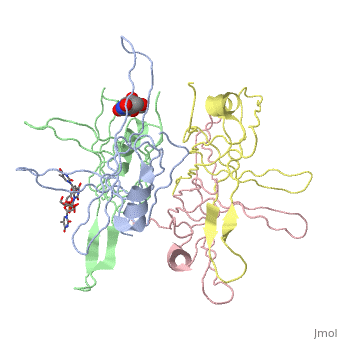Single-stranded DNA-binding protein (SSB) binds to single-stranded regions of DNA (ssDNA) to protect it from annealing, prevention of secondary structure formation and digestion. SSB binds to DNA in a sequence-independent manner. The binding of SSB enables processes like replication, DNA repair and recombination to occur. SSB can form complexes with specific genome maintenance proteins helping their activities[1].
- Viral SSB proteins are monomeric.
- Eukaryotic SSB (Replication protein A – RPA) is a heterotrimer composed of RPA70, RPA32 and RPA14. RPA has 6 DNA-binding domains (DBD).
- Replication protein A70 is the eukaryotic SSB 70kDa subunit[2].
- Mitochondrial human SSB (HsmtSSB) is a homotetramer.
See also Single stranded binding protein.
3D Structures of single-stranded DNA-binding protein
Single-stranded DNA-binding protein 3D structures

